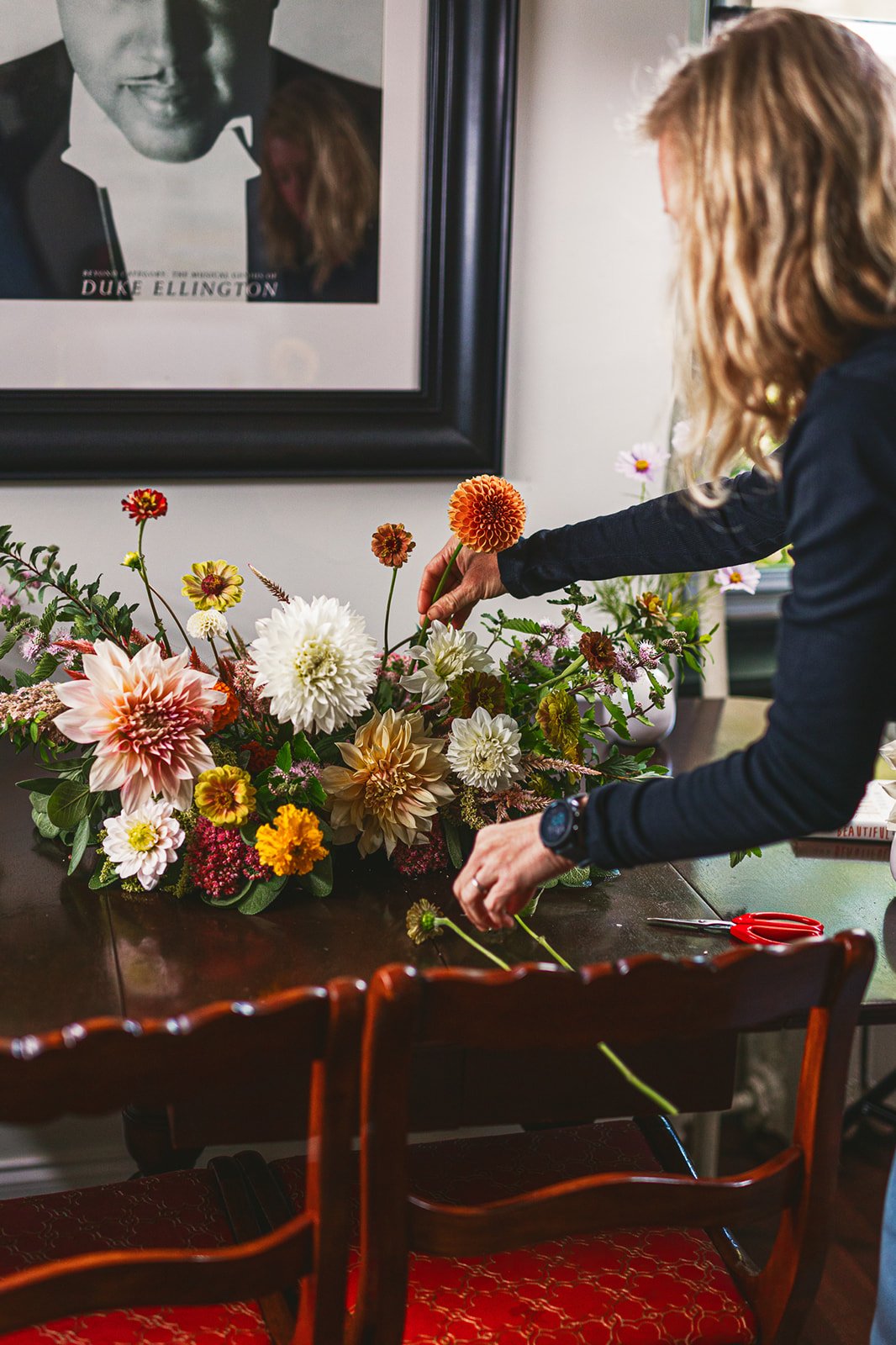Sustainable Mechanics
Both florists who use floral foam and those who do not are aware of the harm it causes to the environment and to personal health. It is no secret and none can claim ignorance. While I do not cast judgement on anyone who chooses to use it, I personally choose not to. I feel a strong conviction to practice methods of floral design that help care for the earth, conserve resources, and uplift human health whenever possible. This goes beyond merely abstaining from floral foam and I certainly do not claim perfection. However, in an industry that can be so wasteful, I thought I would share one of my favorite techniques for creating a grounded centrepiece using sustainable mechanics.
Ingredients: (all sourced from Lunaria Gardens)
Foliage: 5 branches of spirea
Foliage: 5 stems of sage
Focal Flower: 3 large dahlia heads, 3-5 smaller dahlia heads
Filler Flower: 5 stems of sedum
Secondary flowers: 7-9 small headed zinnias or marigolds
Line Flowers: 3-5 stems of caryopteris
Texture Florals: 3 stems of amaranth, 3-5 stems of celosia (plume and cockscomb)
Fluttery Flowers: 3 stems of cosmos
Extra Materials needed:
1.25’ x .5’ slab of flat wood
rectangular plastic container (to fit on wood)
3 ft of chicken wire
green paint (optional)
staple gun
sheers
wire clippers
water + watering can or vessel
Arrangement Instructions:
Unroll chicken wire so that it measures double the the width of the plastic container (about 1 ft.) but keep the length so it easily fits. It might look like a burrito as you place in the plastic container.
*For extra stability, stick a flower frog to the bottom of the container before adding chicken wire.
Place the container with the chicken wire flat on top of the wood.
Create a chicken wire tunnel/ sleeve. Use the chicken wire to measure the length of the wood. Place the chicken wire over both the container and wood so that even the edges are covered with chicken wire. Leave space on the width to slide container in and out. Staple gun the chicken wire on the four corner edges and and the middle edge along the length of the wood (ensuring not to poke a hole in the plastic container). Using your hands, close the chicken wire on the width’s edges
I recommend painting the edges green in case the bottom wood panel can be seen at any point. You can do this either when the chicken wire is on or before.
Fill the container of chicken wire with fresh cold water using a watering can.
Place the greenery in the vase first, keeping the center low and the edges with greenery reaching out and covering some of the chicken wire on the edges.
Imagine an invisible zig zag line drawing your eye up and down from the top of your shape towards the end. Place your dahlias along the zig zag line with some behind and others forward. All focal flowers should come out towards you and add dimension. You do not want your dahlias looking flat.
Next, place the flower fillers lower in the arrangement. Seedum does so well out of water so use it in some of the ares where you need to cover chicken wire Place hanging amaranth over the edges and clumps of celosia low in the arrangement.
Add the secondary flowers of smaller zinnias or marigolds, connecting the space between the sedum, celosia and the zinnias.
Following some of the foliage lines, Place the caryopteris.
Lastly, place the cosmos floating above and around the arrangement.
All Photography was taken by the incredible Stacey McDonald







